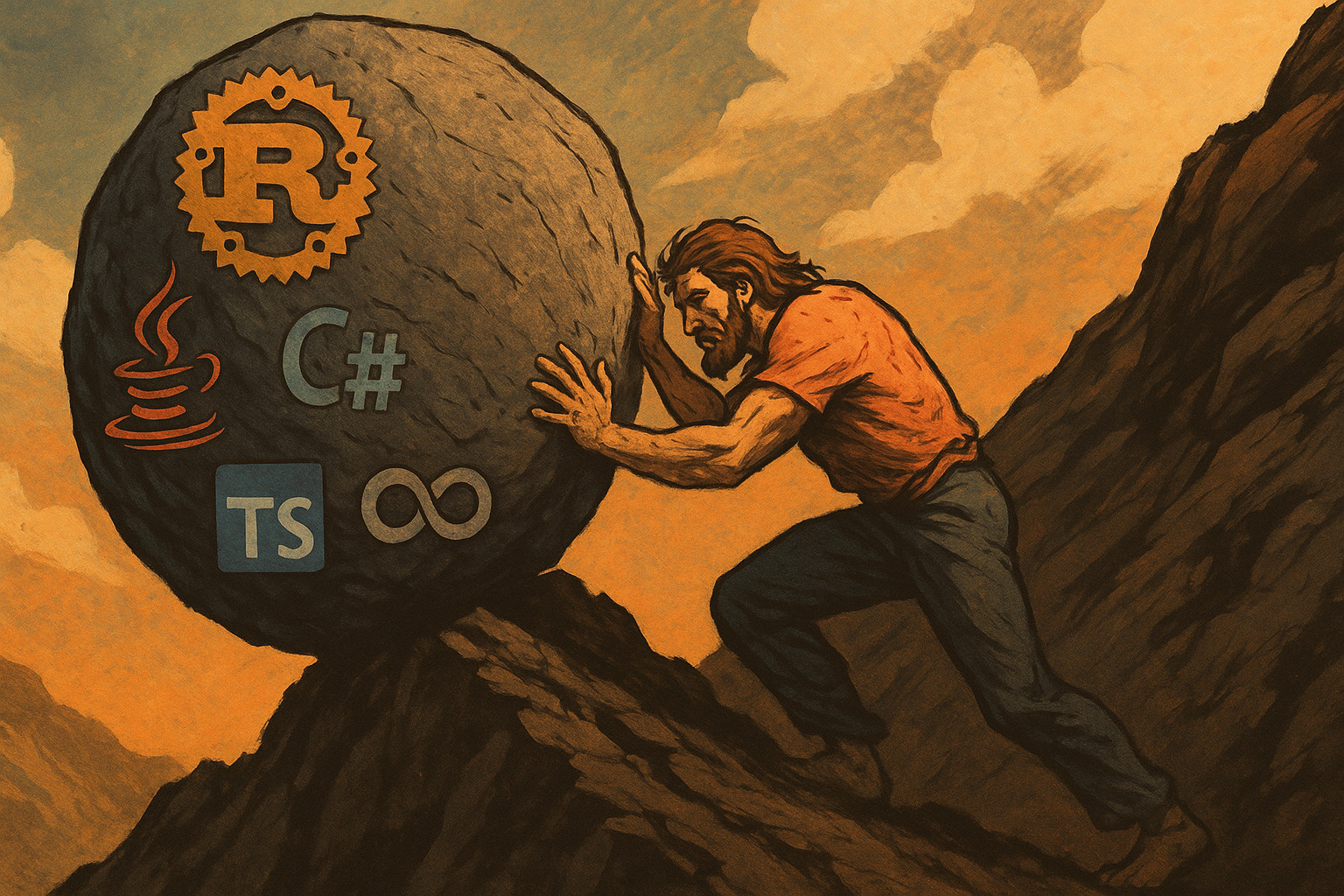It’s 2025, and after five years in the trenches of DevOps, TypeScript, Java, C#, and Rust, I find myself staring at my resume once again, wondering: why is finding a new role feeling like pushing a rock up a hill? In a profession built on solving problems, the act of landing a job has become its own paradoxical riddle—one where effort seems inversely proportional to reward.
The Endless Push: Experience vs. Expectations
On paper, five years of full-stack engineering plus DevOps competencies should unlock doors. Yet, recruiters often send cryptic form-rejections or ghost us outright. Why? Companies advertise “senior” roles requiring half a decade of experience and ten years of leadership. Others demand mastery of niche frameworks that barely existed when we graduated. Are we truly underqualified, or is the bar being raised to keep candidates trapped in an eternal cycle of “just one more year”?
This mismatch mirrors the myth of Sisyphus: no matter how skilled we become, the criterion shifts, and that rock slides back down. We polish our resumes in TypeScript one week, containerize every service by next Tuesday, then wake up to job boards flooded with “junior” openings—ones where managers expect seniors’ output at juniors’ pay.

Changing Tech Landscapes: Moving Goalposts Everywhere
Five years ago, Rust was the outsider language. Today, everyone’s “excited” about its safety guarantees— yet few production shops have the infrastructure to adopt it fully. We learn Rust in our free time, convinced it will set us apart, but hiring managers admit candidly: “We tried it, but performance gains didn’t outweigh migration costs.”
Meanwhile, the DevOps narrative shifts weekly: Kubernetes v1.x is replaced by another orchestration layer, serverless hype cycles crash and burn, then rise again. Am I learning Kubernetes, Helm, Terraform— only to be told next week that the industry has moved on to “Infrastructure as Data”?
It’s like Sisyphus perfecting each step of his uphill push, only to see the hill reshape below him. One day, your Terraform modules are best practice; the next, a new DSL renders them obsolete.
The Invisible Skills Gap: Soft Skills and the Cultural Fit
Hiring today isn’t just about tech stacks—it’s about “culture fit.” We’ve sat through marathon interviews dissecting behavioral questions, whiteboard-ing solutions under pressure, and performing “system design” charades. Yet many of us wonder: are these tests measuring our ability to engineer, or just our willingness to conform?
I’ve seen remarkable engineers passed over because they didn’t express interest in ping-pong tables or felt uneasy in back-to-back social screenings. The boulder rolls back when we realize the interview is a performance art piece—favoring extroverts who can juggle buzzwords more effectively than those who simply deliver clean, reliable code.
Burnout and the Myth of “Always-On” Productivity
Pushing the rock gets exhausting. After hours spent mastering cloud infrastructure, troubleshooting container networking at 2 a.m., or wrestling with type mismatches in TypeScript, burnout creeps in. And yet, job postings glorify the “hustle culture” — expecting candidates to maintain a portfolio of side projects, contribute to open-source, and still have time to blog about it.
We ask ourselves: if effort guarantees nothing more than reaching the same point on the hill, why keep pushing? The myth of endless productivity has us questioning our value — not just as engineers, but as human beings.
Towards a More Humane Path: Rethinking the Ascent
What if we reimagine the climb? Instead of endless self-optimization, could the industry foster transparency about real role expectations? Could hiring processes emphasize project-based evaluations over cultural performance reviews? What if companies acknowledged that experience isn’t a static number, but a spectrum of skills and perspectives?
For our part, perhaps we can build a community that shares candid experiences — successful and otherwise — and offers peer-to-peer mentorship outside the echo chambers of “tech hype.” We might lobby for standardized role frameworks that align experience bands with responsibilities and compensation, rather than chameleon-like requirements that shift with every market breath.

Conclusion: Finding Solid Ground Amidst the Rolling Rock
The tale of Sisyphus reminds us of the absurdity inherent in endless toil — but it also holds a profound lesson: even in the face of futility, the act of struggle can be its own purpose. Yet, we don’t have to accept the absurdity as immutable law. By questioning the status quo, sharing our stories, and demanding clearer, fairer hiring practices, we might just carve out a path that feels less like pushing a boulder up a perpetually changing slope — and more like a steady ascent toward meaningful work.
After all, engineering is about crafting solutions. Perhaps it’s time to apply that ethos inward, to the systems of hiring themselves, and transform our Sisyphean push into a collaborative climb.
If you’ve made it this far, thank you for reading. This isn’t just an abstract lament — it’s lived reality. Behind every résumé is a human pushing that metaphorical boulder day after day, hoping the effort will finally crest the hill.
I’m one of them.
With five years of hands-on experience in DevOps, TypeScript, Java, C#, and Rust, I’ve built, maintained, and improved systems under real-world pressures. I’m not chasing hype — I’m delivering value, learning continuously, and striving to collaborate with people who do the same.
If you’re looking for someone who’s not only technically skilled but deeply reflective, persistent, and pragmatic, hire me here.
Let’s stop moving the finish line and start building something worthwhile — together.

Leave a Reply